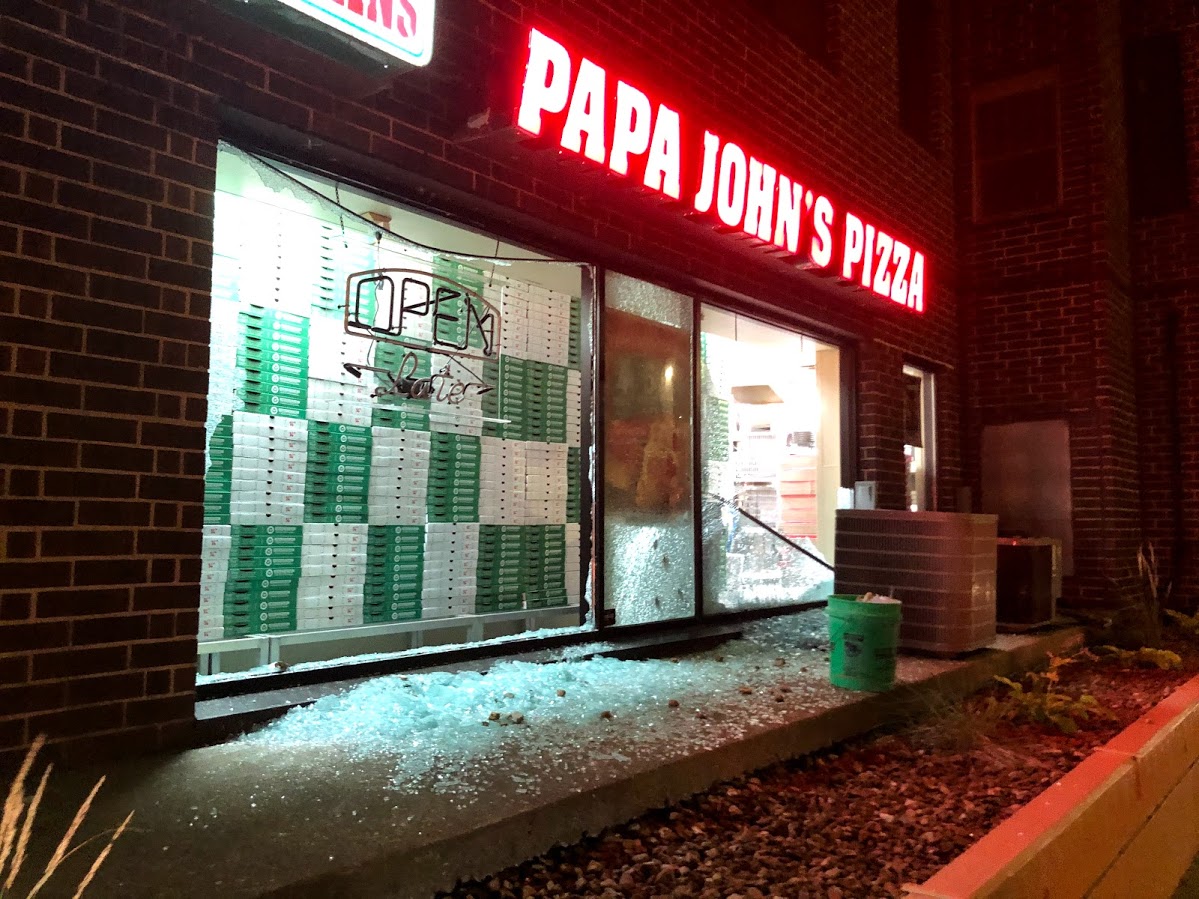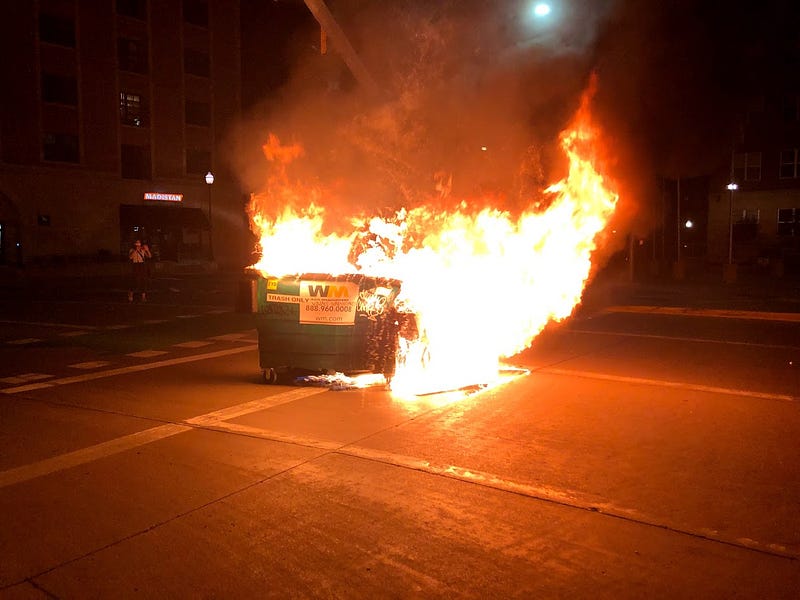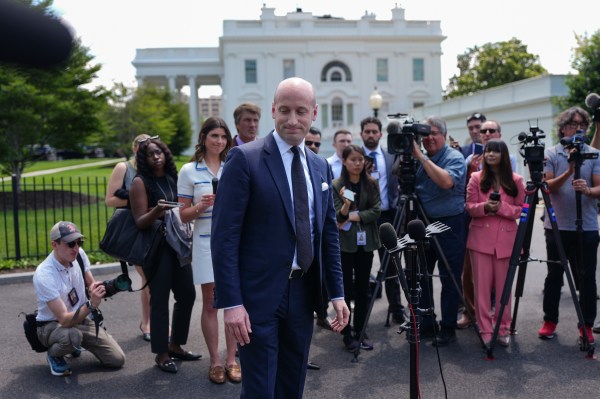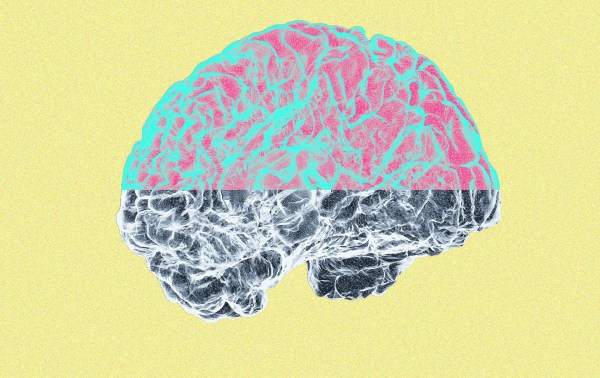MADISON, Wisconsin—At midnight, standing where a statue commemorating women’s suffrage was torn down just weeks earlier, a young woman with a bullhorn explained rioting etiquette.
“Make sure you stay with your buddy when the s–t goes down,” she said, adding, “people who are alone get arrested.”
She noted that when the violence actually began, anyone caught with their cell phone out taking pictures would be dealt with. “Pictures get people identified,” she barked.
She then announced the group would then be headed to the Dane County Jail.
It was the second night in the most recent round of protesting in Madison following the shooting of Jacob Blake of nearby Kenosha. Blake is still in serious condition and is reportedly paralyzed from the waist down following the shooting.
Violent riots have engulfed Kenosha after Blake was shot seven times in the back by police—on Tuesday night, three people were shot and two died after an encounter between protesters and armed men at a gas station.
Madison, meanwhile, has been in protest mode almost continually since the death of George Floyd while in the custody of Minneapolis police. The fact that another act of police violence against a black man happened an hour’s drive away renewed the penchant for property damage among Madison’s youth.
On Monday night, Madison experienced what Fire Chief Steven Davis called “probably the most destruction and damage I’ve seen in this city as far as arson fires and attempted arson.”
And so on Tuesday, Madison Police Chief Vic Wahl said property damage would not be tolerated.
“We are committed to preserving people’s ability to protect their opinions, but property damage, starting fires, violence and things that put our community at risk is obviously the type of behavior we’re not going to condone and will make us intervene,” he said.
But at midnight, despite the protesters announcing where they were going to begin to damage property and how they planned to avoid arrest, law enforcement was nowhere to be found. On the off chance the crowd of about 200 people encountered a police car, the officer would courteously pull away and let the chanting marchers continue unabated.
Minutes after the blueprint for bedlam was given to the crowd—organizers explained that nobody can tell people of color how to express their pain because they suffer from “post traumatic slave syndrome”—young men started picking up small rocks and hurling them at glass windows in the courthouse. The structure has an enormous wall made up almost entirely of windows, and I often had to duck to make sure I wasn’t hit by a rock thrown by the people five feet to my right.
The crowd then turned left on Carroll Street, where an enormous American flag had been draped on the street and lit on fire. The flag, however, was stubbornly flame-retardant, so protesters began spraying it with some sort of accelerant. Finally, one protester just dropped the whole pressurized spray can on the flag, and it exploded like a bomb going off.
The crowd stopped marching every few blocks for more speeches, but the violence didn’t let up. Finally, a skinny man with what appeared to be a motorcycle’s exhaust pipe began smashing in enormous windows belonging to a local poke bowl restaurant. They continued down the line, shattering windows to what appeared to be a condominium office next door. Some men crawled through the opening and danced inside.
When one protester suggested cleaning up the broken glass, another said “let the white people clean it up.”

As this took place, almost out of nowhere, some men appeared with a dumpster full of flaming materials, rolling it out to the middle of University Avenue. Soon, other protesters cracked the window of a Papa John’s pizza franchise as an irate employee looked on from inside, waving his arms in anger. Finally, a second wave of rioters finished the job and smashed the window completely out. Several other protesters stopped to help clean up the broken glass.
By this time, the flaming dumpster had become an afterthought, but upon looking back, I realized that it had erupted, with flames 20 feet high. The protesters had left it and were 100 yards down the street setting fire to another dumpster and smashing more windows.
The night had begun on a far different note. At about 9:30, a group of elected officials led by respected Boys and Girls Club CEO Michael Johnson gathered to urge nonviolence throughout the night. “We can’t burn our city down,” said Johnson. “When people come here and try to tear s–t down, we need to intervene,” he said.
And for a while, his pleas worked. For two hours, the mass of people marched through the streets of the city, chanting, and sporadically stopping in front of large apartment buildings to urge the beer-drinking students on their patios to come out and join them.
Amid the occasional waft of marijuana smoke, the group, led by two young women with bullhorns, ran through a litany of chants. At one point, one of the women stopped to lecture the attendees for walking too fast down a hill. “You have to walk slowly down a hill!” she yelled, ending with “UNITY!”
At about 11 p.m., the mass of people stopped in front of Memorial Library on the University of Wisconsin campus. Several speeches were given, many with theatrical pauses and emotional notes. Bits of wisdom imparted on the crowd ranged from “without change, nothing happens” to “unless change comes, it’s a problem.”
But the primary speakers did give their demands to any lawmakers who might be listening. They want passage of a law banning no-knock warrants, such as the one used in the killing of Breonna Taylor by police in Louisville, Kentucky. They demanded passage of the “Hands Up, Don’t Shoot” law, which would require the immediate arrest of any officer that kills an unarmed individual. And finally, they urged “community control” of the local police force, which would allow citizens to overrule law enforcement practices and decisions.
But in order to control the police force, they would have to find them first. With fires raging and broken glass littering the ground, officers in riot gear finally appeared at 1:20 a.m., late enough to allow those who smashed windows and started fires to vanish. With officers on horses and in squad cars, they eventually pushed everyone back to the Capitol where a number of arrests were reportedly made.
At 2 a.m., with the crowd dispersed, I began walking back to my car when I saw it was surrounded by police cars. To my right, I saw a young man run up beside me and throw what looked like a lit piece of dynamite at the cops. One officer yelled “incoming!” and an enormous explosion took place—it was the size of one of the fireworks they shoot into the air during the Fourth of July. I was just far away enough that I didn’t get hit, but close enough that an officer would easily assume I was the one who threw it.
I quickly walked backward, ducked into an alley, and was able to work my way behind the police to my car. I was thankful I was alive and not in handcuffs.
But it was clear, after another night of violence and destruction, nobody was any closer to receiving justice.
Christian Schneider is a reporter for The College Fix and author of 1916: The Blog,
Photographs by Christian Schneider.






Please note that we at The Dispatch hold ourselves, our work, and our commenters to a higher standard than other places on the internet. We welcome comments that foster genuine debate or discussion—including comments critical of us or our work—but responses that include ad hominem attacks on fellow Dispatch members or are intended to stoke fear and anger may be moderated.
With your membership, you only have the ability to comment on The Morning Dispatch articles. Consider upgrading to join the conversation everywhere.